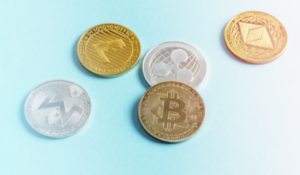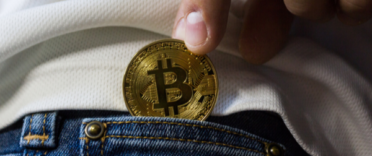 When buying or selling on a cryptocurrency exchange, you will probably see the words 'maker' and 'taker' used to determine how you are charged for your transaction. These words dictate how high or low your trading fees will be on some of the most popular exchanges in the world – including Coinbase and Gemini. In this article, we explain the difference between maker and taker fees, and how much you can expect to be charged with each across five of the most popular cryptocurrency exchanges.
When buying or selling on a cryptocurrency exchange, you will probably see the words 'maker' and 'taker' used to determine how you are charged for your transaction. These words dictate how high or low your trading fees will be on some of the most popular exchanges in the world – including Coinbase and Gemini. In this article, we explain the difference between maker and taker fees, and how much you can expect to be charged with each across five of the most popular cryptocurrency exchanges.
When do you need to pay maker or taker fees?
Most cryptocurrency exchanges only use a maker-taker fee model for those with advanced or pay-to-use accounts, such as Coinbase Pro or Gemini’s ActiveTrader. The standardised fees for using an exchange (usually dictated by the volume of cryptocurrency you are trading) tend to be much higher, so investors that make regular or large transactions may find that switching to one of these advanced accounts with a maker-taker fee model could save them a significant amount in usage fees.
What is a maker fee?
Put simply, a 'maker' fee is the charge applied to your transaction if your order adds liquidity to the market.
Usually this applies when you place an order for a cryptocurrency, which is not immediately fulfilled and deposited into your wallet (such as a limit order, in which you do not buy or sell until the cryptocurrency you have ordered has reached a specified price). Your transaction then sits 'on the books' waiting to be completed, adding liquidity to the market and demand for a certain price point. A maker fee is charged on these types of transactions because the buyer is effectively 'making' the market demand for the cryptocurrency in question.
Maker fees are typically less expensive than other fees as exchanges want to encourage buyers to generate liquidity, which is often treated as an indicator of market interest, and so they offer lower fees to incentivise customers to help 'make' the market. The downside to playing the role of a maker is that your order will likely take longer to complete than an instantaneous trade, but you have the benefit of only completing your transaction once the cryptocurrency reaches your specified price point.
What is a taker fee?
A 'taker' fee will be applied to your order if the transaction 'takes' liquidity away from the market.
This is typically the case with instantaneous transactions, such as a market order paid with a debit card (in which your order is placed and executed immediately using the market value at the point of purchase), because your order is fulfilled instantly. The immediacy of this type of transaction often comes with a higher fee because you are 'taking' the order you want, as soon as you place it, without driving demand for a particular price point as you would with a 'maker' transaction.
Ideally, you want to play the maker role to incur the lowest fees, but if you’re looking for speed and convenience then you will need to pay a bit extra for a taker order.
The cheapest maker and taker fees
Maker and taker fees differ between different cryptocurrency exchanges, but maker fees are almost always less expensive, as a maker transaction benefits both yourself (in fulfilling your order) and the exchange itself (by driving market interest). We’ve listed the maker and taker fees from five of the most popular cryptocurrency exchanges to show you how much the amount can differ, and where to access some of the lowest charges.
| Exchange | Maker Fees | Taker Fees |
| CEX.IO | 0.00%-0.16% | 0.10%-0.25% |
| Kraken | 0.00%-0.16% | 0.10%-0.26% |
| Gemini | 0.00%-0.25% | 0.03%-0.35% |
| Coinbase | 0.00%-0.50% | 0.00%-0.50% |
| Bittrex Global | 0.00%-0.75% | 0.05%-0.75% |
More on cryptocurrency
For more information on cryptocurrency, check out the following articles:



